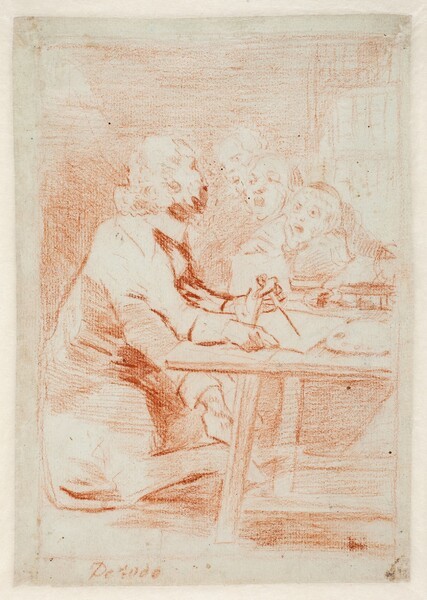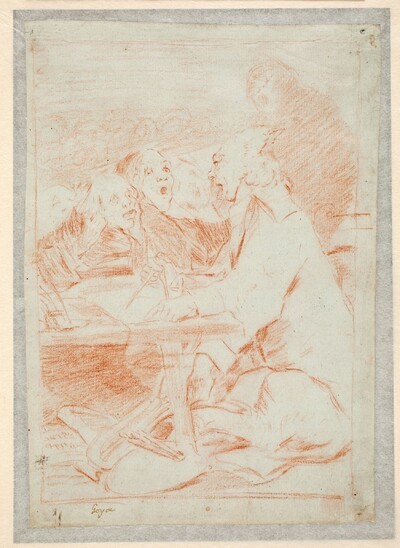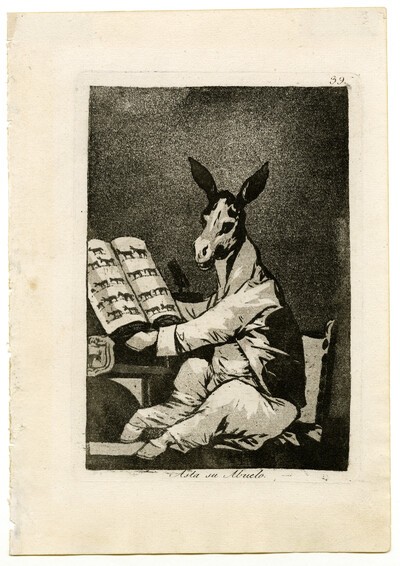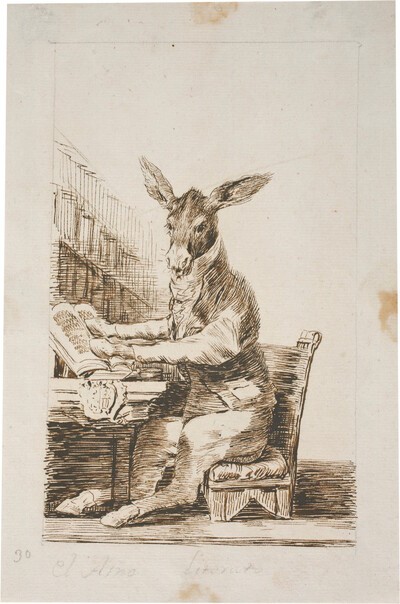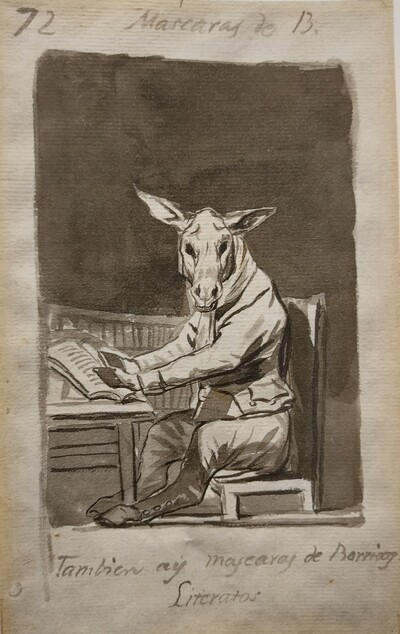- Cronología
- Ca. 1797
- Ubicación
- The Prado National Museum. Madrid, Madrid, Spain
- Dimensiones
- 210 x 148 mm
- Técnica y soporte
- Sanguine on laid paper
- Reconocimiento de la autoría de Goya
- Documented work
- Titular
- El Prado National Museum
- Ficha: realización/revisión
- 20 Aug 2021 / 19 Apr 2023
- Inventario
- D4164
De todo (in red chalk, lower left-hand corner)
Watermark: [Shield with helmet, bird inside, and underneath "D.N J.PH GISBERT / ALCOY"] (lower half)
In the early 19th century the drawing belonged to the scholar and friend of Goya's Juan Agustín Ceán Bermúdez (1749-1829). On his death in 1829 it passed to his widow and by the second half of the 19th century it was in the Parisian collection of Paul Lefort, who sold it at public auction held on 28-29 January 1869 at the Hôtel Drouot in Paris (lot 117), acquiring it from Pedro Fernández Durán de Madrid, who bequeathed it to the Museo del Prado by testamentary disposition on 6 July 1923. Following acceptance of the donation, the drawing entered the Prado Museum by Royal Order of 31 March 1931.
On the probable advice of Goya's academic friends, this preparatory drawing for the Capriches was neither engraved nor included in the edition of the Capriches , as it could be interpreted as a direct attack on a particular person.
The main figure in the composition, with the body of an ass, human arms and the face of a sheep, is seated drawing on a table with the aid of a compass and palette, while turning his head towards three gawping admirers. In the background on the left is a bookcase full of volumes.
On the other side of the paper Goya drew the same scene in reverse, including a wig on the head of the protagonist in the form of an ass's ears. In the drawing on the reverse, entitled The Pedant, the painter added a lyre at the scholar's feet, which was not included in the drawing on the front and which could symbolise a satire on the pedants who know everything. The bookshop has been replaced by what appears to be an audience attending the lectures of this curious professor.
Both drawings could be related to Caprice 39. Even His Grandfather, which shows a donkey sitting in front of a table with a book between his hooves, and to earlier variants of the same painting such as Dream 26: The Literary Donkey and Masks of B. There are also masks of literary donkeys.
-
cat. 68r
-
cat. 68r
-
Europa 1789. Aufklärung, Verklärung, VerfallHamburger KunsthalleHamburg1989
-
Goya. La década de Los CaprichosMadrid1992organized by Real Academia de Bellas Artes de San Fernando sponsored by Fundación Central Hispano, Madrid, consultant editor Nigel Glendinnig. From October 26th 1992 to January 10th 1993cat. 123
-
Ydioma universal: Goya en la Biblioteca NacionalBiblioteca NacionalMadrid1996from September 19th to December 15th 1996cat. 135b
-
MadridMuseo del Prado1954n. 197
-
Vie et ouvre de Francisco de GoyaParísOffice du livre1970p. 186, cat. 630
-
Dibujos de Goya, 2 volsBarcelonaNoguer1975p. 171, cat. 134
-
MadridReal Academia de Bellas Artes de San Fernando1992pp. 208-210, cat. 123
-
Ydioma universal: Goya en la Biblioteca NacionalMadridBiblioteca Nacional, Sociedad Estatal Goya 96 y Lunwerg1996p. 160
-
MadridMuseo Nacional del Prado2004pp. 31-49
